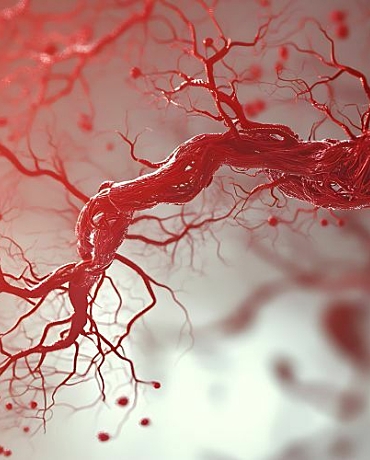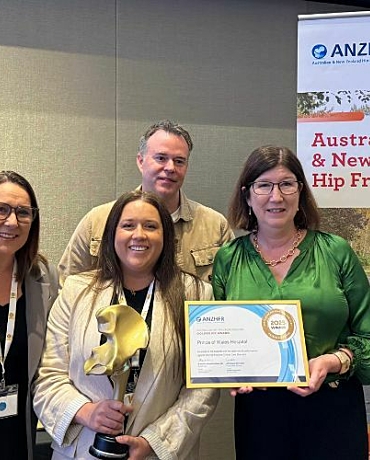The new case series, published today in the Journal of Neuropathology and Applied Neurobiology in collaboration with the University of Sydney, Alfred Health and Harvard Medical School, includes clinicopathological analysis of the brains of six former elite-level Australian rugby league and union players, donated to the Former Elite-Level Athlete Brain Health Research Program.
Researchers found mixed neurodegenerative pathologies, including CTE-NC, were common across the case group, which was made up of individuals who all had extensive exposure to collision sport and exhibited progressive cognitive impairment during life.
All six cases met the criteria for traumatic encephalopathy syndrome (TES), a set of clinical criteria that has been used to describe the features of CTE-NC, which it is hoped in the future could be used to diagnose CTE in living people. Currently CTE-NC can only be diagnosed after death.
CTE-NC was identified in four out of the six cases. One additional case exhibited some characteristics of CTE-NC, but did not meet the full diagnostic criteria.
Limbic-predominant age-related TDP-43 encephalopathy (a type of pathology that has been associated with problems with memory and thinking) was observed in all cases.
Aging-related tau astrogliopathy (ARTAG) – which commonly occurs in the brain as part of the normal ageing process and is notable in those with CTE-NC and frequently seen in neurodegenerative diseases, including Alzheimer’s disease – was also observed in all cases.
Intermediate or high levels of Alzheimer’s disease pathology were detected in four cases, and hippocampal sclerosis was seen in two of the six cases.
Dr Claire Shepherd, study lead and Director of the Sydney Brain Bank at NeuRA, said by matching each individual’s clinical history over their life with post mortem neuropathology, researchers are able to provide the most wholistic picture of each player’s symptoms during life and their brain health.
“This case series published today, shows that more must be done to better understand the relationship between head injury and all forms of neurodegenerative disease, not just CTE-NC,” said Dr Shepherd.
“While a growing awareness of CTE and TES is obviously incredibly important, it’s vital that clinicians keep an open mind to other neurodegenerative diseases that may also be at play when individuals who have had high exposure to head impacts present with progressive cognitive decline or impairment.”
“This is particularly important as other conditions, such as Alzheimer’s Disease or Lewy body dementia, may benefit from treatment, whereas there is currently no treatment for CTE.”
Dr Shepherd said Sydney Brain Bank researchers were incredibly grateful to the players and their families who were part of this small case series, and the broader Former Elite-Level Athlete Brain Health Research Program.
“Their involvement contributes to the growing body of scientific knowledge of CTE-NC, as well the relationship between co-existing pathologies and repetitive head injury. Every brain donation helps us to understand a new piece of the puzzle.”
-ENDS-
Additional information
About the case series group
- All players in this cohort exhibited progressive cognitive impairment during life, which is consistent with the high instance of neurodegenerative neuropathology in this particular case series.
- Their age at death ranged from 60 – 90 years.
- All individuals had extensive exposure to collision sport. The duration of their playing careers ranged from 22 – 33 years, while their duration of play at the elite level ranged from 8 – 19 years. The games they played at the elite level ranged from 28 – 383.
- Their disease duration ranged from 3 – 13 years.
What is CTE-NC?
Chronic traumatic encephalopathy neuropathological change (CTE-NC) is characterised by the presence of abnormal accumulations of a protein called tau in the brain. It has primarily been identified in the brains of former combat, collision, and contact sport athletes after death. To diagnose CTE-NC, an individual must display tau protein within brain cells (neurons) around blood vessels in the folds of the brain known as sulci. Diagnosis can only occur after autopsy.
What is traumatic encephalopathy syndrome (TES)?
Traumatic encephalopathy syndrome (TES) is a set of criteria that has been used in an attempt to describe the clinical features of chronic brain damage experienced by some ultra-high exposure collision and contact sport athletes. Although consensus criteria for TES were published in 2021, there are currently no scientifically validated diagnostic criteria for TES and it is recommended for use in a research setting only.
The presence of multiple neuropathologies in these cases complicates clinical diagnostic validation efforts for TES. It will be important for further clinicopathological studies on larger groups to report all neuropathological comorbidities found in cases diagnosed with either chronic traumatic encephalopathy neuropathological change and/or traumatic encephalopathy syndrome.
How was the clinical information collected?
- For five out of the six cases the information pertaining to medical history, including clinical diagnoses, was collected during an in-person research visit as part of the Former Elite-Level Athlete Brain Health Research Program. Each participant that attended the in-person research visit was accompanied by their next-of-kin.
- For the sixth case this information was collected from the next-of-kin posthumously.
- Information was collected via clinical interview and health questionnaires completed by the participant and/or their next-of-kin, and neuropsychological testing conducted with the participant.
- Information regarding lifetime history of sport participation was collected from the participant (if they were capable of doing so) or the informant.





